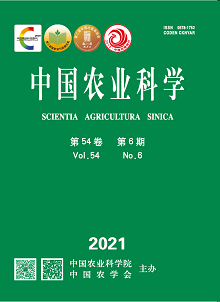【Objective】Selected one suspension PK15 cell line which is suitable for PCV2 virus , and then developed the production process for PCV2 vaccines(source of virus, MOI and harvest time ), to provide basic theory and guarantee for large-scale production use suspension culture instead of adherent culture. 【Method】The PK15 primary cells were diluted using the limiting dilution method and seeded in 96-well plates. The cell growth and morphology were observed every 2 days. After 90% of the cells were overgrown, the cells were gradually expanded from 96-well plates to 24-well plates,to 12-well plates, to 6-well plate, and finally to the square flask, three PK15 clones with good morphology that can grow adherently were selected. Three PK15 clones with good morphology that can grow adherently were selected. Three clones (PK15-1C8, 2F11, 1E5) were directly seeding in PK15 serum-free medium at a density of 1×106cells/mL and placed in a shaker incubator at 37 ℃, 5% carbon dioxide, and 120 r/min to continue culture. Monitor the cell density and viability every day, passage every 3 days, make the cells gradually adapt to the suspension environment, the PK15 clone can culture as a fully suspension cell line and can growth well in serum free media. After suspension cells stability passage and cell bank, compared the PCV2 virus content with three suspension clone cells, one clone cell was selected for PCV2 production. For different kinds of viruses (source from adherent cells or suspension cells), explore the infection MOI (0.1, 0.2, 0.5) and harvest time (48, 72, 96, 120h), determine the best production process of PCV2. 【Results】(1)The results showed that when the adherent cells passage to second generation in serum media CD PK15 259, the cells can suspended growth, continuous passage for eleven generation, suspension cells can growth stable, when seeding with 1×106 /mL cells, cells can reach 10×106 /mL cells when growth at 72h, viability rate is above 95%, and the doubling time is about 20h; (2) The three suspension cells use the same condition to infection PCV2 virus, the virus content of PK15-1C8 cloned cells can reach 106.4TCID50/mL, clone PK15-2F11 (105.5TCID50/mL), PK15-1E5 (105.6TCID50/mL), the virus content of the three cloned cells was higher than that of the original clone (104.7TCID50/mL), however, the virus content of PK15-1C8 cloned cells is higher and more stable, so it is determined as a cell for follow-up research; (3) After infecting PK15-1C8 cloned cells with seed virus (106.4TCID50 /mL) from adherent cells, the optimal process is 1×106/mL cell density with 0.1MOI and harvest at 72h the virus content can reach 106.5TCID50 /mL. After infecting PK15-1C8 cloned cells with seed virus (106.3TCID50 /mL) from suspension cells, the optimal process is 1×106/mL cell density with 0.2MOI and harvest at 72h the virus content can reach 107.3TCID50 /mL. 【Conclusion】Through the monoclonal screening of PK15 cells, adapted to suspension cells compared the PCV2 virus content of 3 suspension cells, a suspension cell with the highest virus content was determined, and based on this suspension cell, explored the process of PCV2 virus, and then established the PCV2 fully suspension, serum-free culture process. The SV15-1C8 cell proliferation PCV2 process of full suspension serum-free culture was established. This process used suspension cells to amplify PCV2 virus for seed poisoning for the first time. The highest virus content can reach 107.3TCID50/mL, which can be used for factory vaccine production. According selection sensitive clones and optimized the process for PCV2, can increase the virus titer, and realizes full suspension culture without serum, improved the production process of PCV2, improve the production efficiency, reduce the cost and improve the quality of the production. This process first use suspension cells to amplify the PCV2 virus. The highest virus content can reach 107.3TCID50/mL, which can be used for large-scale PCV2 virus production.









